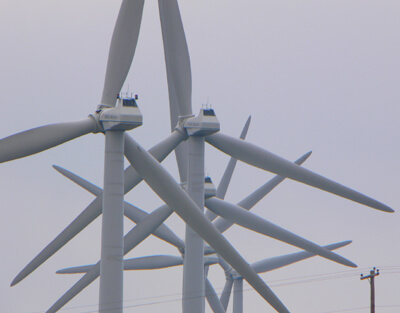Massive Bird Kill at West Virginia Wind Farm Highlights National Issue
MEDIA RELEASE
Contact: Robert Johns, 202-234-7181 ext.210,
 |
| Wind turbines by Mike Parr |
(Washington, D.C., October 28 2011) With the deaths of nearly 500 birds at the Laurel Mountain wind facility earlier this month, three of the four wind farms operating in West Virginia have now experienced large bird fatality events, according to American Bird Conservancy (ABC), the nation's leading bird conservation organization.
“Wind energy has the potential to be a green energy source, but the industry still needs to embrace simple, bird-smart principles that would dramatically reduce incidents across the country, such as those that have occurred in West Virginia,” said Kelly Fuller, ABC's Wind Campaign Coordinator.
There were three critical circumstances that tragically aligned in each of the three West Virginia events to kill these birds. Each occurred during bird migration season, during low visibility weather conditions, and with the addition of a deadly triggering element – an artificial light source. Steady-burning lights have been shown to attract and disorient birds, particularly night-migrating songbirds that navigate by starlight, and especially during nights where visibility is low such as in fog or inclement weather. Circling birds collide with structures or each other, or drop to the ground from exhaustion.
At the Laurel Mountain facility in the Allegheny Mountains, almost 500 birds were reportedly killed after lights were left on at an electrical substation associated with the wind project. The deaths are said to have occurred not from collisions with the wind turbines themselves, but from a combination of collisions with the substation and apparent exhaustion as birds caught in the light's glare circled in mass confusion.
On the evening of September 24 this year at the Mount Storm facility in the Allegheny Mountains, 59 birds and two bats were killed. Thirty of the dead birds were found near a single wind turbine that was reported to have had internal lighting left on overnight. This incident stands in stark contrast to industry assertions that just two birds per year are killed on average by each turbine. Data from Altamont Pass, California wind farms – the most studied in the nation – suggest that over 2,000 Golden Eagles alone have been killed there.
On May 23, 2003 at the Mountaineer wind farm in the Allegheny Mountains, at least 33 birds were killed. Some of the deaths were attributed to collisions with wind turbines and some to collisions with a substation.
“The good news is that it shouldn't be hard to make changes that will keep these sorts of unnecessary deaths from happening again, but it's disturbing that they happened at all. It has long been known that many birds navigate by the stars at night, that they normally fly lower during bad weather conditions, and that artificial light can draw them off course and lead to fatal collision events. That's why minimizing outdoor lighting at wind facilities is a well-known operating standard. And yet lights were left on at these sites resulting in these unfortunate deaths. This reinforces the need to have mandatory federal operational standards as opposed to the optional, voluntary guidelines that are currently under discussion,” Fuller said.
A fourth wind farm in West Virginia, the Beech Ridge Wind Energy Project in Greenbrier County, has not experienced large mortality events, likely because it is currently prohibited by a court order from operating during nighttime between April 1 and November 15.
“Some West Virginia conservation groups have suggested that other wind farms in the state should shut down their wind turbines at certain times and seasons to protect birds. Given the recurring bird-kill problems, that idea needs to be seriously considered, at least during migration season on nights where low visibility is predicted. A wind farm in Texas is doing just that, so it is possible.” said Fuller.


















































